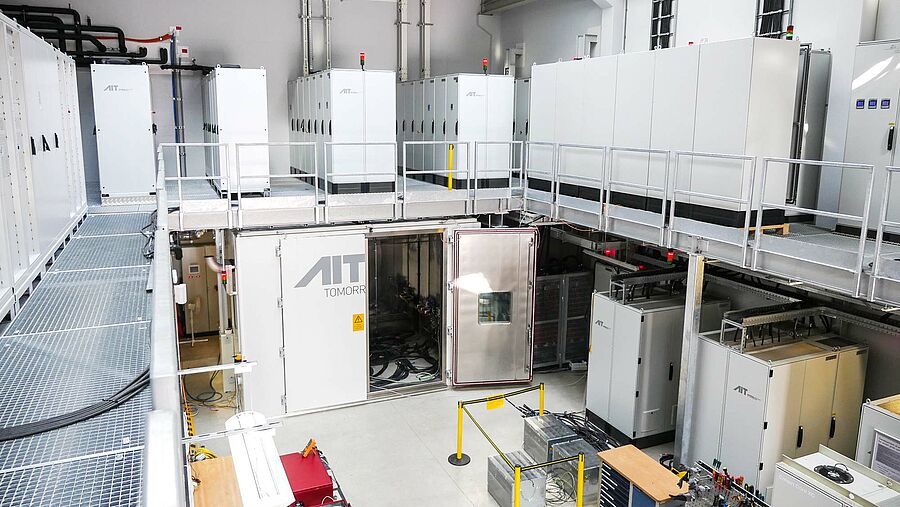The shift towards electrified mobility
As electric vehicles (EVs) become more widespread, the demand for higher efficiency, lower costs and more compact components continues to characterise the automotive landscape. At the Austrian Institute of Technology (AIT), our experts are pushing the boundaries of power electronics with ground-breaking work on gallium nitride (GaN)-based traction inverters. These innovations are revolutionising the way energy is converted and used in electric vehicles, making next-generation electric drive systems more powerful, compact and sustainable.
The role of traction inverters in the efficiency of electric vehicles
Traction inverters are at the heart of the electric drivetrain. They convert the direct current from the electric vehicle's battery into alternating current for the motor. The efficiency of this conversion has a significant impact on the vehicle's range, battery size and thermal management. Conventional inverters, which are based on silicon-based semiconductors such as MOSFETs and IGBTs, reach their limits at high voltages and switching frequencies. This is where GaN comes into play.
Why GaN? A leap beyond silicon
aN semiconductors belong to a class of materials known as wide bandgap (WBG) semiconductors, which offer performance advantages far beyond those of traditional silicon. The superior properties of GaN include:
Higher breakdown voltage: Allows operation at higher voltages.
High switching frequencies: Enables more compact magnets and higher power densities.
Lower on-resistance: Reduces conduction losses.
Minimised switching losses: Critical for electric vehicles, especially at low load, which accounts for 90% of typical operation.
At AIT, we utilise these advantages to develop traction inverters that are not only more efficient, but also smaller, lighter and more cost-effective.



